-
-
Space seems so incredibly vast and empty, but there is a lot hidden inside that seemingly empty void. From fungal spores to charged bucky balls. Radiation in space seeps everywhere and makes long term space travel dangerous for humans, but fungal spores cope just fine. Radiation can also cause beautiful light shows like the aurora but can make light tough for astronauts. How can we use social media to track the beautiful aurora light shows? How do we clean a space ship or space station?
References:- L. Orr, S. C. Chapman, J. W. Gjerloev. Directed network of substorms using SuperMAG ground‐based magnetometer data. Geophysical Research Letters, 2019; DOI: 10.1029/2019GL082824
- American Geophysical Union. (2019, June 27). Space station mold survives high doses of ionizing radiation: New research presented at the 2019 Astrobiology Science Conference in Bellevue, Wa.. ScienceDaily. Retrieved July 7, 2019 from www.sciencedaily.com/releases/2019/06/190627121252.htm
- M. A. Cordiner, H. Linnartz, N. L. J. Cox, J. Cami, F. Najarro, C. R. Proffitt, R. Lallement, P. Ehrenfreund, B. H. Foing, T. R. Gull, P. J. Sarre, S. B. Charnley. Confirming Interstellar C60 Using the Hubble Space Telescope. The Astrophysical Journal, 2019; 875 (2): L28 DOI: 10.3847/2041-8213/ab14e5
Episodes

Monday May 04, 2020
Episode 377 - Hubble turns 30 and still takes amazing images
Monday May 04, 2020
Monday May 04, 2020
We celebrate the life and achievements of Hubble Space telescope and all that have worked on it over it's 30 years in space (and many more before that). We look at the challenges faced by Hubble early on, and the amazing science it is helping contribute to today. From stars being born, to comets tearing themselves apart Hubble sheds light on amazing science. The images Hubble takes are iconic and often look like science fiction. Hubble manages to celebrate it's birthday by capturing images of a comet tearing itself apart.
- Information@eso.org. (n.d.). Hubble Celebrates its 30th Anniversary with a Tapestry of Blazing Starbirth. Retrieved May 02, 2020, from https://www.spacetelescope.org/news/heic2007/
- ESA/Hubble Information Centre. (2020, April 28). Hubble captures breakup of comet ATLAS. ScienceDaily. Retrieved May 1, 2020 from www.sciencedaily.com/releases/2020/04/200428142410.htm

Monday Feb 24, 2020
Episode 367 - Sustainable and green Chemistry
Monday Feb 24, 2020
Monday Feb 24, 2020
Making chemistry green and sustainable, from cheaper catalyst to sorting solvents. How can you make catalysts cheaper and re-usable? Is there a cheaper catalyst to breakdown CO2? How can we make a circular carbon economy? Solvents play an important role in chemistry so how do you greenly find the right match? Green chemistry can be made more efficient using CO2.
- Youngdong Song, Ercan Ozdemir, Sreerangappa Ramesh, Aldiar Adishev, Saravanan Subramanian, Aadesh Harale, Mohammed Albuali, Bandar Abdullah Fadhel, Aqil Jamal, Dohyun Moon, Sun Hee Choi, Cafer T. Yavuz. Dry reforming of methane by stable Ni–Mo nanocatalysts on single-crystalline MgO. Science, 2020; 367 (6479): 777 DOI: 10.1126/science.aav2412
- Suyong Han, Keshav Raghuvanshi, Milad Abolhasani. Accelerated Material-Efficient Investigation of Switchable Hydrophilicity Solvents for Energy-Efficient Solvent Recovery. ACS Sustainable Chemistry & Engineering, 2020; DOI: 10.1021/acssuschemeng.9b07304

Monday Feb 17, 2020
Episode 366 - The YORP Effect, Star Brawls and Solar wind
Monday Feb 17, 2020
Monday Feb 17, 2020
What happens when stars brawl? What do they leave behind? When stars are dying they take down everything and everything around them from asteroids to other stars. What is the YORP effect? How do some tiny solar particles destroy an asteroid? Spiraling out of control, asteroids get YORP-ed at the end of a star's life. When a star gets to the end of it's life, it may swell in size, taking out asteroids and nearby stars.
- H. Olofsson, T. Khouri, M. Maercker, P. Bergman, L. Doan, D. Tafoya, W. H. T. Vlemmings, E. M. L. Humphreys, M. Lindqvist, L. Nyman, S. Ramstedt. HD 101584: circumstellar characteristics and evolutionary status. Astronomy & Astrophysics, 2019; 623: A153 DOI: 10.1051/0004-6361/201834897
- Dimitri Veras, Daniel J Scheeres. Post-main-sequence debris from rotation-induced YORP break-up of small bodies – II. Multiple fissions, internal strengths, and binary production. Monthly Notices of the Royal Astronomical Society, 2020; 492 (2): 2437 DOI: 10.1093/mnras/stz3565
- M. I. Desai, D. G. Mitchell, J. R. Szalay, E. C. Roelof, J. Giacalone, M. E. Hill, D. J. McComas, E. R. Christian, N. A. Schwadron, R. L. McNutt Jr., M. E. Wiedenbeck, C. Joyce, C. M. S. Cohen, R. W. Ebert, M. A. Dayeh, R. C. Allen, A. J. Davis, S. M. Krimigis, R. A. Leske, W. H. Matthaeus, O. Malandraki, R. A. Mewaldt, A. Labrador, E. C. Stone, S. D. Bale, M. Pulupa, R. J. MacDowall, J. C. Kasper. Properties of Suprathermal-through-energetic He Ions Associated with Stream Interaction Regions Observed over the Parker Solar Probe’s First Two Orbits. The Astrophysical Journal Supplement Series, 2020; 246 (2): 56 DOI: 10.3847/1538-4365/ab65ef

Monday Jan 13, 2020
Episode 361 - Fast Radio Bursts, Cosmic Rays and Antarctica
Monday Jan 13, 2020
Monday Jan 13, 2020
From Fast Radio Bursts to Cosmic rays, interstellar mystery solving is a team effort. Mysterious repeating signals from space are tricky to localize, like spotting a person on the moon from here on Earth. What can fast radio bursts from billions of light years away tell us about the nature of the universe? How do you hunt for the source of a mysterious radio burst billions of light years away? How does a tiger, a balloon and Antarctica help us understand Supernova? What's the best place to hunt for cosmic rays; floating above Antarctica with a Super Tiger.
- B. Marcote, K. Nimmo, J. W. T. Hessels, S. P. Tendulkar, C. G. Bassa, Z. Paragi, A. Keimpema, M. Bhardwaj, R. Karuppusamy, V. M. Kaspi, C. J. Law, D. Michilli, K. Aggarwal, B. Andersen, A. M. Archibald, K. Bandura, G. C. Bower, P. J. Boyle, C. Brar, S. Burke-Spolaor, B. J. Butler, T. Cassanelli, P. Chawla, P. Demorest, M. Dobbs, E. Fonseca, U. Giri, D. C. Good, K. Gourdji, A. Josephy, A. Yu. Kirichenko, F. Kirsten, T. L. Landecker, D. Lang, T. J. W. Lazio, D. Z. Li, H.-H. Lin, J. D. Linford, K. Masui, J. Mena-Parra, A. Naidu, C. Ng, C. Patel, U.-L. Pen, Z. Pleunis, M. Rafiei-Ravandi, M. Rahman, A. Renard, P. Scholz, S. R. Siegel, K. M. Smith, I. H. Stairs, K. Vanderlinde, A. V. Zwaniga. A repeating fast radio burst source localized to a nearby spiral galaxy. Nature, 2020; DOI: 10.1038/s41586-019-1866-z
- Ogliore, T. (2020, January 10). SuperTIGER on its second prowl -- 130,000 feet above Antarctica: The Source: Washington University in St. Louis. Retrieved from https://source.wustl.edu/2020/01/supertiger-on-its-second-prowl-130000-feet-above-antarctica/.
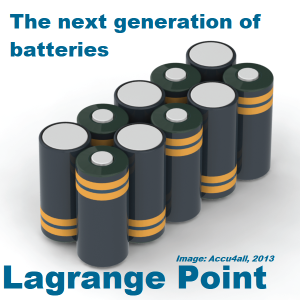
Monday Oct 14, 2019
Episode 348 - More efficient Lithium-Ion batteries and Organic Batteries
Monday Oct 14, 2019
Monday Oct 14, 2019
We launch from the Nobel Prize for Chemistry 2019 into current battery research and development. Creating the ubiquitous Lithium Ion battery took decades of collaborative research across the globe. How are scientists working together today to make the new generation of batteries? Can we improve LI batteries with new electrolyte mixes? How can we use Silicon instead of graphite in our batteries to give them a boost? Is it possible to make an organic recyclable battery? How can we use proteins and peptides to make organic batteries? Can we make batteries without damaging the environment?
References:
- Nobel Foundation. (2019, October 9). Nobel Prize in Chemistry 2019: Lithium-ion batteries. ScienceDaily. Retrieved October 11, 2019 from www.sciencedaily.com/releases/2019/10/191009082508.htm
- Binghong Han, Chen Liao, Fulya Dogan, Stephen E. Trask, Saul H. Lapidus, John T. Vaughey, Baris Key. Using Mixed Salt Electrolytes to Stabilize Silicon Anodes for Lithium-Ion Batteries via in Situ Formation of Li–M–Si Ternaries (M = Mg, Zn, Al, Ca). ACS Applied Materials & Interfaces, 2019; 11 (33): 29780 DOI: 10.1021/acsami.9b07270
- American Chemical Society. (2019, August 26). Producing protein batteries for safer, environmentally friendly power storage. ScienceDaily. Retrieved October 12, 2019 from www.sciencedaily.com/releases/2019/08/190826092322.htm5

Monday Sep 16, 2019
Monday Sep 16, 2019
We look at galactic events, where galaxies collide, stars form and emptiness of space. Space is so unfathomably huge, but its still possible for galaxies to collide. The Milky Way was formed through one of this violent collisions over 10 billion years ago. Space seems empty but there are sections of space that are emptier than others, the great Local Void around the Local group. Stars forming in galaxies rely on gas clouds, but what does it take to form a star? What do you need to really make a good nursery for stars?
- R. Brent Tully, Daniel Pomarède, Romain Graziani, Hélène M. Courtois, Yehuda Hoffman, Edward J. Shaya. Cosmicflows-3: Cosmography of the Local Void. The Astrophysical Journal, 2019; 880 (1): 24 DOI: 10.3847/1538-4357/ab2597
- Kazufumi Torii, Shinji Fujita, Atsushi Nishimura, Kazuki Tokuda, Mikito Kohno, Kengo Tachihara, Shu-ichiro Inutsuka, Mitsuhiro Matsuo, Mika Kuriki, Yuya Tsuda, Tetsuhiro Minamidani, Tomofumi Umemoto, Nario Kuno, Yusuke Miyamoto. FOREST Unbiased Galactic plane Imaging survey with the Nobeyama 45 m telescope (FUGIN). V. Dense gas mass fraction of molecular gas in the Galactic plane. Publications of the Astronomical Society of Japan, 2019; DOI: 10.1093/pasj/psz033
- Carme Gallart, Edouard J. Bernard, Chris B. Brook, Tomás Ruiz-Lara, Santi Cassisi, Vanessa Hill, Matteo Monelli. Uncovering the birth of the Milky Way through accurate stellar ages with Gaia. Nature Astronomy, 2019; DOI: 10.1038/s41550-019-0829-5
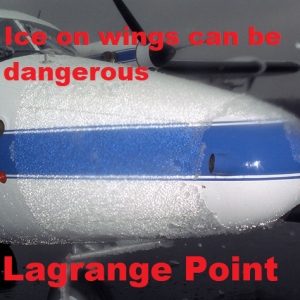
Monday Sep 02, 2019
Episode 342 - Better chemistry and physics in everyday objects
Monday Sep 02, 2019
Monday Sep 02, 2019
How can we use physics and chemistry to help improve our everyday objects? Melting ice is very important for airplanes and air-conditioners. How can you melt unwanted on objects ice more efficiently? Ice on an airplane wing can be dangerous, so how do we melt it more efficiently. Flame retardants are important to stop fire spreading, but how do we make them safer and environmentally friendly? Flame retardants often rely on petroleum which are not environmental friendly. How can we stop flame retardants leeching into the environment or into our households? How do you get white paint without relying on environmentally intensive additives. What can beetles and recycle plastic teach us about making whiter paint.
References:
- S. Chavan, T. Foulkes, Y. Gurumukhi, K. Boyina, K. F. Rabbi, N. Miljkovic. Pulse interfacial defrosting. Applied Physics Letters, 2019; 115 (7): 071601 DOI: 10.1063/1.5113845
- Stephanie L. Burg, Adam Washington, David M. Coles, Antonino Bianco, Daragh McLoughlin, Oleksandr O. Mykhaylyk, Julie Villanova, Andrew J. C. Dennison, Christopher J. Hill, Pete Vukusic, Scott Doak, Simon J. Martin, Mark Hutchings, Steven R. Parnell, Cvetelin Vasilev, Nigel Clarke, Anthony J. Ryan, Will Furnass, Mike Croucher, Robert M. Dalgliesh, Sylvain Prevost, Rajeev Dattani, Andrew Parker, Richard A. L. Jones, J. Patrick A. Fairclough, Andrew J. Parnell. Liquid–liquid phase separation morphologies in ultra-white beetle scales and a synthetic equivalent. Communications Chemistry, 2019; 2 (1) DOI: 10.1038/s42004-019-0202-8
- American Chemical Society. (2019, August 26). Flame retardants -- from plants. ScienceDaily. Retrieved August 31, 2019 from www.sciencedaily.com/releases/2019/08/190826092330.htm
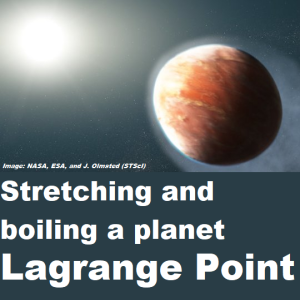
Monday Aug 05, 2019
Episode 338 - Exoplanets boiling and stretching, Goldilocks and Supernova
Monday Aug 05, 2019
Monday Aug 05, 2019
Boiling planets being stretched and squished. Tiny white dwarf stars going supernova. Goldilocks planets potentially with liquid water. Exoplanet hunting is now a lot easier with missions like TESS and veterans like Hubble. We look at some special cases, and how searching for 1 planet can uncover loads more. Sometimes planets are lurking in old observatory data, we just need to know where to look. Too hot, too cold, GJ357 potentially has a planet that's just right with liquid water. What causes a White Dwarf to go supernova? It needs more than itself to kickstart it into a Type 1a nova...so where does the extra boost come from? Devouring another planet? Or another star?
References:
- L. Kaltenegger, J. Madden, Z. Lin, S. Rugheimer, A. Segura, R. Luque, E. Palle, N. Espinoza. The Habitability of GJ 357 d Possible Climates and Observability. Astrophysical Journal Letters, 2019; (accepted) [link]
- R. Luque, E. Pallé, D. Kossakowski, S. Dreizler, J. Kemmer, N. Espinoza. Planetary system around the nearby M dwarf GJ 357 including a transiting, hot, Earth-sized planet optimal for atmospheric characterization. Astronomy & Astrophysics, 2019; DOI: 10.1051/0004-6361/201935801
- David K. Sing, Panayotis Lavvas, Gilda E. Ballester, Alain Lecavelier des Etangs, Mark S. Marley, Nikolay Nikolov, Lotfi Ben-Jaffel, Vincent Bourrier, Lars A. Buchhave, Drake L. Deming, David Ehrenreich, Thomas Mikal-Evans, Tiffany Kataria, Nikole K. Lewis, Mercedes López-Morales, Antonio García Muñoz, Gregory W. Henry, Jorge Sanz-Forcada, Jessica J. Spake, Hannah R. Wakeford. The Hubble Space Telescope PanCET Program: Exospheric Mg ii and Fe ii in the Near-ultraviolet Transmission Spectrum of WASP-121b Using Jitter Decorrelation. The Astronomical Journal, 2019; 158 (2): 91 DOI: 10.3847/1538-3881/ab2986
- P J Vallely, M Fausnaugh, S W Jha, M A Tucker, Y Eweis, B J Shappee, C S Kochanek, K Z Stanek, Ping Chen, Subo Dong, J L Prieto, T Sukhbold, Todd A Thompson, J Brimacombe, M D Stritzinger, T W-S Holoien, D A H Buckley, M Gromadzki, Subhash Bose. ASASSN-18tb: a most unusual Type Ia supernova observed by TESS and SALT. Monthly Notices of the Royal Astronomical Society, 2019; 487 (2): 2372 DOI: 10.1093/mnras/stz1445
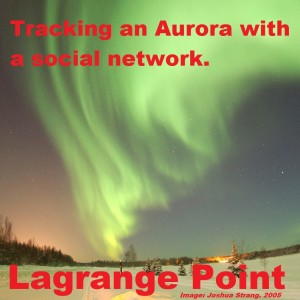
Sunday Jul 07, 2019
Lagrange Point Episode 334 - Hidden in empty space
Sunday Jul 07, 2019
Sunday Jul 07, 2019
|
|

Monday Jun 17, 2019
Episode 331 - Making modern technology less energy intensive
Monday Jun 17, 2019
Monday Jun 17, 2019
Our modern world relies on energy, and some of it produce a lot of carbon dioxide. How can we make everything from air travel to wearable tech be less carbon intensive? Is there a way to make jet fuel or power ships that is carbon neutral? Just how much energy do crypto currency burn up? What is the impact of all this Bitcoin speculation on the health of the planet? From Fitbits to smart watches and Pokemon Go, wearable tech is a big trend, but how can we make these devices power themselves. There is a lot of excess energy when we walk and move, so can we use this to power our technology?
References:
- ETH Zurich. (2019, June 13). Carbon-neutral fuel made from sunlight and air. ScienceDaily. Retrieved June 15, 2019 from www.sciencedaily.com/releases/2019/06/190613103146.htm
- Christian Stoll, Lena Klaaßen, Ulrich Gallersdörfer. The Carbon Footprint of Bitcoin. Joule, 2019; DOI: 10.1016/j.joule.2019.05.012
- Michael G. Stanford, John T. Li, Yieu Chyan, Zhe Wang, Winston Wang, James M. Tour. Laser-Induced Graphene Triboelectric Nanogenerators. ACS Nano, 2019; DOI: 10.1021/acsnano.9b02596
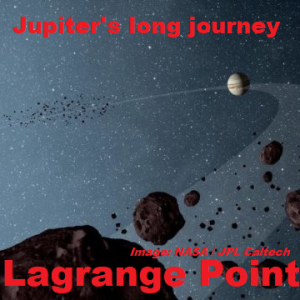
Monday Jun 03, 2019
Episode 329 - Mysteries from the formation of our solar systems
Monday Jun 03, 2019
Monday Jun 03, 2019
There are many things we don't understand from the formation of our solar system. Why did Jupiter end up with weird asymmetrical groupings of asteroids around it? Is there a region of dust free space around the sun? If there is why can't we find it? What caused the beautiful rings of dust millions of kms wide around Venus and Mercury? Where did that dust come from? All these questions and more as we unpack the hidden parts of our solar system.
References:
- Petr Pokorný, Marc Kuchner. Co-orbital Asteroids as the Source of Venus's Zodiacal Dust Ring. The Astrophysical Journal, 2019; 873 (2): L16 DOI: 10.3847/2041-8213/ab0827
- S. Pirani, A. Johansen, B. Bitsch, A.J. Mustill, D. Turrini. Consequences of planetary migration on the minor bodies of the early solar system. Astronomy & Astrophysics, 2019; DOI: 10.1051/0004-6361/201833713
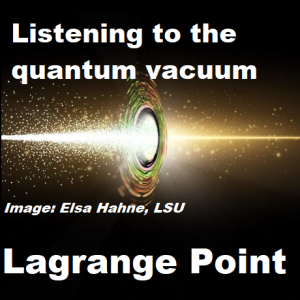
Monday Apr 29, 2019
Monday Apr 29, 2019
Hunting for missing dark matter or gravitational waves involves incredibly precise measurements. Scientists are constantly developing new measurement techniques to try and find new sources of data and test theories. Whether it be staring at the space between Andromeda and the Milky Way to find primordial black holes, to looking in the remnants of a white dwarf using spectroscopy. Plus ways to make the newer generation of gravitational wave detectors more accurate by listening to quantum noise.
References:
- Hiroko Niikura, Masahiro Takada, Naoki Yasuda, Robert H. Lupton, Takahiro Sumi, Surhud More, Toshiki Kurita, Sunao Sugiyama, Anupreeta More, Masamune Oguri, Masashi Chiba. Microlensing constraints on primordial black holes with Subaru/HSC Andromeda observations. Nature Astronomy, 2019; DOI: 10.1038/s41550-019-0723-1
- Christopher J. Manser, Boris T. Gänsicke, Siegfried Eggl, Mark Hollands, Paula Izquierdo, Detlev Koester, John D. Landstreet, Wladimir Lyra, Thomas R. Marsh, Farzana Meru, Alexander J. Mustill, Pablo Rodríguez-Gil, Odette Toloza, Dimitri Veras, David J. Wilson, Matthew R. Burleigh, Melvyn B. Davies, Jay Farihi, Nicola Gentile Fusillo, Domitilla De Martino, Steven G. Parsons, Andreas Quirrenbach, Roberto Raddi, Sabine Reffert, Melania Del Santo, Matthias R. Schreiber, Roberto Silvotti, Silvia Toonen,†, Eva Villaver, Mark Wyatt, Siyi Xu, Simon Portegies Zwart. A planetesimal orbiting within the debris disc around a white dwarf star. Science, 2019 DOI: 10.1126/science.aat5330
- Jonathan Cripe, Nancy Aggarwal, Robert Lanza, Adam Libson, Robinjeet Singh, Paula Heu, David Follman, Garrett D. Cole, Nergis Mavalvala, Thomas Corbitt. Measurement of quantum back action in the audio band at room temperature. Nature, 2019; DOI: 10.1038/s41586-019-1051-4
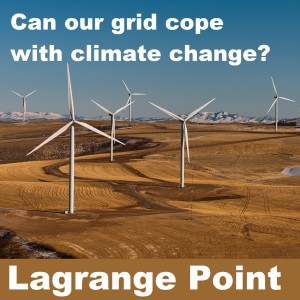
Monday Mar 11, 2019
Monday Mar 11, 2019
One of the futuristic technologies always touted is Hydrogen fuel cells. So why are they not everywhere? we look at the challenges in production,storage, and use of hydrogen from cars to factories. Plus we examine if our electricity grid will be able to cope with the drastic weather condition changes from climate change in the year 2100.
References:
- Yinjun Xie, Peng Hu, Yehoshoa Ben-David, David Milstein. A Reversible Liquid Organic Hydrogen Carrier System Based on Methanol-Ethylenediamine and Ethylene Urea. Angewandte Chemie International Edition, 2019; DOI: 10.1002/anie.201901695
- Gunther Glenk, Stefan Reichelstein. Economics of converting renewable power to hydrogen. Nature Energy, 2019; DOI: 10.1038/s41560-019-0326-1
- Smail Kozarcanin, Hailiang Liu, Gorm Bruun Andresen. 21st Century Climate Change Impacts on Key Properties of a Large-Scale Renewable-Based Electricity System. Joule, 2019; DOI: 10.1016/j.joule.2019.02.001
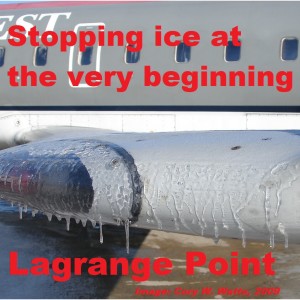
Monday Feb 04, 2019
Monday Feb 04, 2019
Water is essential for life, but if its too cold it can cause havoc on infrastructure. If it's too hot there is not enough to go around. If it's too salty its not good for organic material, and if its saturated with CO2 its even more dangerous. So how do we keep water working for us as our climate changes and we have more droughts, more polar vortexes and more power plants? This week we find out about advances in chemistry and materials science that can help make better use of water.
References:
- Peyman Irajizad, Abdullah Al-Bayati, Bahareh Eslami, Taha Shafquat, Masoumeh Nazari, Parham Jafari, Varun Kashyap, Ali Masoudi, Daniel Araya, Hadi Ghasemi. Stress-Localized Durable Icephobic Surfaces. Materials Horizons, 2019; DOI: 10.1039/C8MH01291A
- Peyman Irajizad, Abdullah Al-Bayati, Bahareh Eslami, Taha Shafquat, Masoumeh Nazari, Parham Jafari, Varun Kashyap, Ali Masoudi, Daniel Araya, Hadi Ghasemi. Stress-Localized Durable Icephobic Surfaces. Materials Horizons, 2019; DOI: 10.1039/C8MH01291A
- Neil Williams et al. CO2 Capture via Crystalline Hydrogen-Bonded Bicarbonate Dimers. Chem, 2019 DOI: 10.1016/j.chempr.2018.12.025
- Image: Cory W Watts, 2009
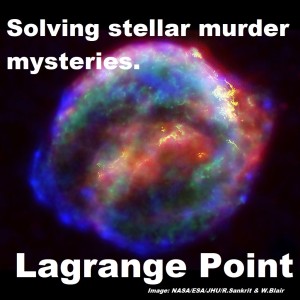
Monday Jan 28, 2019
Monday Jan 28, 2019
What happens when a star dies? We can investigate what is left behind at the scene of the crime to piece together the final moments of a star. Some become white dwarfs so cold and cool they crystallize with thick oxygen and carbon skins. Others collapse in on themselves becoming supernova in a catastrophic core collapse. But sometimes in complex binary systems there is an accomplice that pushes the star over the edge, into supernova territory. Plus super massive black holes can devour passing stars, but sometimes they have a little help.
- Pier-Emmanuel Tremblay, Gilles Fontaine, Nicola Pietro Gentile Fusillo, Bart H. Dunlap, Boris T. Gänsicke, Mark A. Hollands, J. J. Hermes, Thomas R. Marsh, Elena Cukanovaite, Tim Cunningham. Core crystallization and pile-up in the cooling sequence of evolving white dwarfs. Nature, 2019; 565 (7738): 202 DOI: 10.1038/s41586-018-0791-x
- Graham ML et al. Delayed Circumstellar Interaction for Type Ia SN 2015cp Revealed by an HST Ultraviolet Imaging Survey. The Astrophysical Journal, 2019
- Dheeraj R. Pasham, Ronald A. Remillard, P. Chris Fragile, Alessia Franchini, Nicholas C. Stone, Giuseppe Lodato, Jeroen Homan, Deepto Chakrabarty, Frederick K. Baganoff, James F. Steiner, Eric R. Coughlin, Nishanth R. Pasham. A loud quasi-periodic oscillation after a star is disrupted by a massive black hole. Science, Jan. 9, 2019; DOI: 10.1126/science.aar7480

Monday Jan 14, 2019
Episode 309 - Mysterious signals from outside our galaxy!
Monday Jan 14, 2019
Monday Jan 14, 2019
Space is filled with incredibly strange objects, from black holes to neutron stars. In the right conditions these strange stellar objects create incredibly powerful radio bursts which give radio astronomers a treasure trove of data. From the WOW! Signal to Pulsars we recap the history of strange space signals, and we look at the modern hunt for Fast Radio Bursts (FRBs) and how the CHIME observatory in Canada is shedding light on this mystery.
- CHIME FRB Collaboration. Observations of fast radio bursts at frequencies down to 400 megahertz. Nature, 2019 DOI: 10.1038/s41586-018-0867-7
- CHIME FRB Collaboration. A second source of repeating fast radio bursts. Nature, 2019 DOI: 10.1038/s41586-018-0864-x
- Mann, Adam (28 March 2017). "Core Concept: Unraveling the enigma of fast radio bursts". Proc Natl Acad Sci U S A. 114 (13): 3269–3271. Bibcode:2017PNAS..114.3269M. doi:10.1073/pnas.1703512114. PMC 5380068. PMID 28351957.
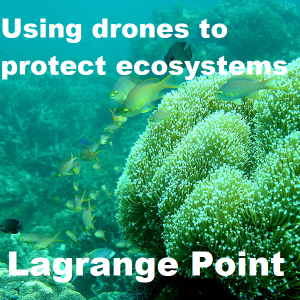
Monday Dec 24, 2018
Episode 306 - Drones as a force for good and evil
Monday Dec 24, 2018
Monday Dec 24, 2018
Drones being used for good, and drones being used for evil. We look at ways that drones can help biologists protect, treat, regrow marine damaged ecosystems. Including IVF transplants for the Great Barrier Reef, sea-grass disease hunting drones and even drones to detect camouflaged birds in forests. We also look into the science behind drone defense and how we can protect our critical infrastructure from rogue drones.
References:
- Hartley, A. (2018, November 27). This attempt to save the reef is the largest, most complicated coral regeneration project ever. Retrieved from https://www.abc.net.au/news/2018-11-27/reef-ivf-unprecedented-new-approach-could-save-dying-coral-reefs/10557718
- Hegranes, J. (2018, January 26). The Past, Present And Future Of Anti-Drone Tech. Retrieved from https://www.forbes.com/sites/forbestechcouncil/2018/01/26/the-past-present-and-future-of-anti-drone-tech/#845428852d62
- Minogue, K. (2018, September 17). Smithsonian Environmental Research Center. Retrieved from https://serc.si.edu/media/press-release/eelgrass-wasting-disease-has-new-enemies-drones-and-artificial-intelligence
- Vincent, J. (2015, December 11). Tokyo police unveil net-wielding interceptor drone. Retrieved from https://www.theverge.com/2015/12/11/9891128/tokyo-interceptor-net-drone
- Shewring, M. (2018, December 13). Drones can detect protected night jar nests (S. Weiss, Ed.). Retrieved from https://www.britishecologicalsociety.org/drones-nightjar-nests/

Monday Dec 17, 2018
Episode 305 - Reaching space, the darkside of the moon and wet asteroids
Monday Dec 17, 2018
Monday Dec 17, 2018
It's been a busy week in space news from Virgin Galactic finally reaching space, to wet asteroids and even a mystery in space. We find out about the latest missions to investigate surprisingly damp asteroids by JAXA and NASA. We recap the swirling controversy around a mysterious hole in the Soyuz spacecraft, plus the latest on Chang'e-4's journey to the dark side of the moon.
- Antczak, J. (n.d.). Virgin Galactic tourism rocket ship reaches space in test. Retrieved from https://phys.org/news/2018-12-virgin-galactic-rocket-ship-space.html
- Jones, A. (2018, December 12). Chang'e-4 spacecraft enters lunar orbit ahead of first-ever far side landing. Retrieved from https://spacenews.com/change-4-spacecraft-enters-lunar-orbit-ahead-of-first-ever-far-side-landing/
- Yamaguchi, M. (n.d.). Photos from Japan space rovers show rocky asteroid surface. Retrieved from https://phys.org/news/2018-12-photos-japan-space-rovers-rocky.html
- Materials provided by University of Arizona. Original written by Erin Morton/OSIRIS-REx and Daniel Stolte. Note: Content may be edited for style and length.
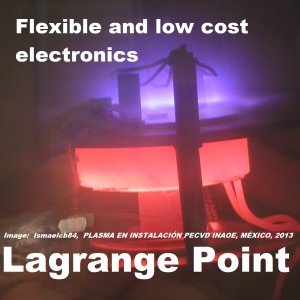
Monday Dec 10, 2018
Episode 304 - Flexible electronics, graphene transfer and paper sensors
Monday Dec 10, 2018
Monday Dec 10, 2018
Flexible electronics and phones sound like science fiction,but materials engineers are turning them into science fact. We find out about projects from across the world to make it a reality. From Australian flexible screens, to MIT's incredibly thin and exotic semiconductors to Purdue's paper based circuits for medical applications.
References:
- Linglong Zhang, Ankur Sharma, Yi Zhu, Yuhan Zhang, Bowen Wang, Miheng Dong, Hieu T. Nguyen, Zhu Wang, Bo Wen, Yujie Cao, Boqing Liu, Xueqian Sun, Jiong Yang, Ziyuan Li, Arara Kar, Yi Shi, Daniel Macdonald, Zongfu Yu, Xinran Wang, Yuerui Lu. Efficient and Layer-Dependent Exciton Pumping across Atomically Thin Organic-Inorganic Type-I Heterostructures. Advanced Materials, 2018; 30 (40): 1803986 DOI: 10.1002/adma.201803986
- Wei Kong, Huashan Li, Kuan Qiao, Yunjo Kim, Kyusang Lee, Yifan Nie, Doyoon Lee, Tom Osadchy, Richard J Molnar, D. Kurt Gaskill, Rachael L. Myers-Ward, Kevin M. Daniels, Yuewei Zhang, Suresh Sundram, Yang Yu, Sang-hoon Bae, Siddharth Rajan, Yang Shao-Horn, Kyeongjae Cho, Abdallah Ougazzaden, Jeffrey C. Grossman, Jeehwan Kim. Polarity governs atomic interaction through two-dimensional materials. Nature Materials, 2018; DOI: 10.1038/s41563-018-0176-4
- Behnam Sadri, Debkalpa Goswami, Marina Sala de Medeiros, Aniket Pal, Beatriz Castro, Shihuan Kuang, Ramses V. Martinez. Wearable and Implantable Epidermal Paper-Based Electronics. ACS Applied Materials & Interfaces, 2018; 10 (37): 31061 DOI: 10.1021/acsami.8b11020
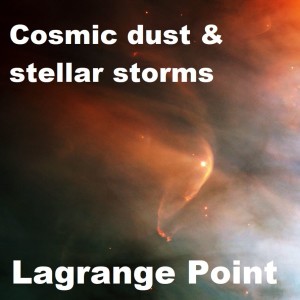
Monday Nov 12, 2018
Episode 300 - Once in a blue asteroid, hidden objects in the Lagrange Point
Monday Nov 12, 2018
Monday Nov 12, 2018
In our 300th episode we return to our roots, the Lagrange Point. We find out about some odd objects hanging out at Earth's Lagrange Point, and how satellites can survive fierce solar storms only to be undone by a stiff breeze. Plus something rarer than a blue moon, a blue asteroid!
- Judit Slíz-Balogh, András Barta, Gábor Horváth. Celestial mechanics and polarization optics of the Kordylewski dust cloud in the Earth–Moon Lagrange point L5 – Part II. Imaging polarimetric observation: new evidence for the existence of Kordylewski dust cloud. Monthly Notices of the Royal Astronomical Society, 2019; 482 (1): 762 DOI: 10.1093/mnras/sty2630
- Richard B. Horne, Mark W. Phillips, Sarah A. Glauert, Nigel P. Meredith, Alex D. P. Hands, Keith A. Ryden, Wen Li. Realistic Worst Case for a Severe Space Weather Event Driven by a Fast Solar Wind Stream. Space Weather, 2018; DOI: 10.1029/2018SW001948
- University of Arizona. (2018, October 29). Rare blue asteroid reveals itself during fly-by. ScienceDaily. Retrieved November 9, 2018 from www.sciencedaily.com/releases/2018/10/181029152849.htm

